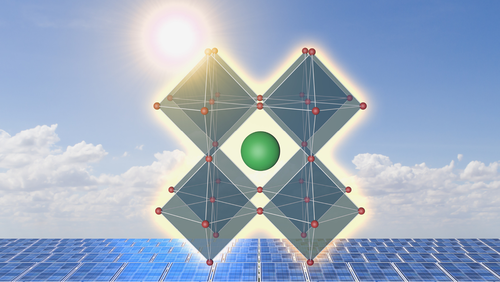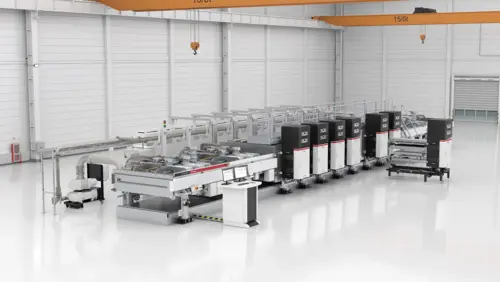为了履行《巴黎协定》,未来几年可再生能源将大规模扩张。《欧洲绿色协议》是推动这一发展的举措之一。因此,光伏发电在全球能源行业将具有越来越重要的战略地位:太阳能将成为下一个“石油”。
因此,确保全球范围内光伏组件的供应变得尤为重要。然而,这将需要在世界各地构建新的制造能力。此外,实现供应链多元化和降低风险也至关重要。同时,在大规模生产过程中,对持续提升效率和生产率的需求依然迫切。
现状
目前,人们对开发新兴的太阳电池技术并将其转化为中试规模生产的需求日益增加。这主要归因于当前的全球疫情形势、供应链压力、组件价格持续攀升,以及行业对超越晶硅组件效率的更高效组件的追求。
存在不同的方法,主要集中在有机技术领域。其中一个例子就是钙钛矿,它可以用于多种能源应用。 “钙钛矿是一类材料,在太阳能电池领域展现出了高性能和低生产成本的潜力。”*“钙钛矿”这一名称源自其晶体结构,如标题图所示。十多年来,这项技术一直是研究的焦点,无论是用于叠层电池还是单结光伏应用。现在,尽管这些材料并非新材料,但在研究和中试层面,对钙钛矿光伏的投资趋势却在日益增长。
这种技术方向的一大优势是,通过调整钙钛矿材料,可以更有效地利用阳光光谱。这将使得大幅超过目前的物理效率极限成为可能。钙钛矿顶部电池利用可见光,而晶体底部电池则利用部分红外光谱。因此,光被转化为能量。
有机材料的另一个重要优势是其合成和生产过程具有成本效益。一些专家指出,与其他制造和沉积技术相比,钙钛矿的沉积甚至更简单,而且非常具有成本效益。
目前,研究机构和业界正在探索这两种策略:
策略 1:在电池层面实现最高效率
策略 2:开发微型或试点组件,同时验证最适合大批量生产的制造方法
有多种沉积技术可用于以叠层电池和单结形式制造钙钛矿太阳电池。其中包括湿法工艺,例如狭缝涂布、旋涂、刮刀涂布,原子层沉积 (ALD) 和物理气相沉积(PVD,即溅射和蒸发)。
PVD 在钙钛矿太阳电池制造中的优势
尽管 PVD 设备所需的资本支出 (CAPEX) 最高,但它可以实现整个生产过程的稳定性和可重复性。此外,PVD 工艺赋予吸收层电学和光学特性,可应用于大批量制造环境,其产量可达每小时 10,000 片以上。就运营成本 (OPEX) 而言,PVD 工艺将带来具有竞争力的拥有成本。
例如,此处展示的 XEA|nova L 镀膜系统就能处理如此大量的硅片。
我们坚信,在钙钛矿电池的配置中,PVD 工艺将被广泛应用于大部分的层结构中。并且,它将是应对全球挑战这一复杂问题中的重要一环。
点击这里阅读更多有关这项技术的信息。
Sources

